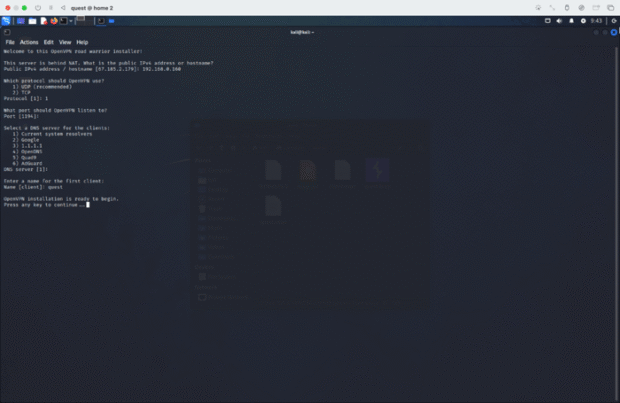
Here is a series of hypothetical cybersecurity scenarios designed to develop your problem-solving skills and strengthen your practical understanding of core concepts. Each scenario includes a challenge, key tasks, and questions to guide your approach.
Scenario 1: Phishing Attack on a Corporate Email System
Background: You are the cybersecurity analyst at a mid-sized company. Several employees report receiving suspicious emails claiming to be from the company’s HR department asking them to click a link to update their personal information.
Tasks:
- Identify the indicators of phishing in the email.
- Investigate whether any employees clicked the link or shared information.
- Analyze the phishing link and determine its malicious intent (e.g., credential theft).
- Implement a short-term and long-term strategy to prevent similar attacks.
Questions to Guide You:
- How would you identify a phishing email (e.g., headers, content, URLs)?
- What tools or techniques could you use to analyze the suspicious link?
- How do you educate employees to spot phishing attempts?
- What measures (e.g., spam filters, MFA) could you implement to reduce phishing risks?
Tools to Use: Email header analysis, VirusTotal (URL analysis), Proofpoint or SpamTitan filters.
Scenario 2: Ransomware Outbreak in an Organization
Background: An employee unknowingly downloads a malicious attachment from a fake invoice email. A ransomware attack encrypts files on their computer and begins spreading across the network. A ransom demand is displayed.
Tasks:
- Contain the ransomware attack to prevent further spread.
- Identify how the ransomware was delivered and executed.
- Decide whether to restore data from backups or consider other options.
- Investigate weaknesses in your organization’s defense mechanisms.
Questions to Guide You:
- What steps would you take to isolate infected systems quickly?
- How can you analyze and identify the ransomware strain (e.g., file extensions, behavior)?
- How would you handle communication with leadership regarding recovery and ransom demands?
- What proactive defenses could you implement (e.g., endpoint protection, regular backups)?
Tools to Use: Sysinternals Suite, Windows Event Logs, EDR tools like CrowdStrike or SentinelOne, Malware sandboxing tools.
Scenario 3: SQL Injection Vulnerability on an E-Commerce Website
Background: A security scan reveals that your company’s e-commerce site is vulnerable to SQL Injection. An attacker could exploit this vulnerability to access the user database.
Tasks:
- Confirm the SQL Injection vulnerability using manual testing or automated tools.
- Determine what sensitive data is at risk.
- Develop a solution to mitigate the vulnerability.
- Propose steps for preventing similar vulnerabilities in the future.
Questions to Guide You:
- How would you identify and validate an SQL Injection vulnerability?
- What are the potential consequences of this attack (e.g., data breach, reputational damage)?
- How would you mitigate this issue (e.g., prepared statements, input validation)?
- What secure coding practices should developers follow?
Tools to Use: SQLMap, Burp Suite, OWASP ZAP, manual SQL Injection payloads.
Scenario 4: Denial-of-Service (DoS) Attack on a Company’s Web Server
Background: Your company’s website suddenly becomes slow and eventually inaccessible. You suspect it is under a Denial-of-Service (DoS) attack.
Tasks:
- Identify the signs of a DoS attack (e.g., abnormal traffic patterns).
- Analyze server logs to confirm the attack’s origin and nature.
- Implement immediate solutions to restore website availability.
- Develop strategies to protect against future DoS/DDoS attacks.
Questions to Guide You:
- What tools or logs would you analyze to confirm the DoS attack?
- How would you filter or block malicious traffic?
- How can you distinguish between legitimate high traffic and a DoS attack?
- What long-term solutions (e.g., CDNs, firewalls) can mitigate such attacks?
Tools to Use: Wireshark, server logs, Cloudflare (CDN), load balancers, firewalls.
Scenario 5: Insider Threat Compromising Sensitive Data
Background: You notice unusual access patterns on sensitive financial data from an employee’s account outside of work hours. It appears that this insider might be exfiltrating confidential information.
Tasks:
- Investigate and confirm suspicious behavior using access logs and monitoring tools.
- Determine how the employee accessed and exfiltrated the data.
- Contain the threat and mitigate further damage.
- Suggest measures to monitor and prevent insider threats in the future.
Questions to Guide You:
- What access logs or tools would you use to confirm data exfiltration?
- How would you distinguish between normal behavior and malicious activity?
- How would you balance investigating an employee with privacy concerns?
- What technical and policy measures (e.g., least privilege, DLP) can reduce insider risks?
Tools to Use: SIEM tools (Splunk, ELK), Data Loss Prevention (DLP) solutions, Access logs.
Scenario 6: Weak Passwords Causing Unauthorized Access
Background: Your company’s system was breached because an admin account used a weak password, which was brute-forced by an attacker.
Tasks:
- Analyze the attack to confirm how the account was compromised.
- Identify other accounts or systems with weak passwords.
- Enforce a password security policy across the organization.
- Implement additional security measures to strengthen authentication.
Questions to Guide You:
- How would you analyze and detect brute-force login attempts?
- What password policies and tools (e.g., password managers) would you implement?
- How can you prevent brute-force attacks (e.g., rate limiting, lockouts)?
- What is the role of Multi-Factor Authentication (MFA) in preventing unauthorized access?
Tools to Use: Password auditing tools (John the Ripper, Hydra), SIEM for login analysis.
Scenario 7: Malware Detected on an Endpoint
Background: An employee’s workstation triggers an alert for malware detection. You must investigate, contain, and analyze the malware.
Tasks:
- Identify the malware’s type and source (e.g., phishing, USB device).
- Analyze the behavior of the malware (e.g., files modified, persistence mechanisms).
- Contain and clean the infected system.
- Implement measures to prevent future malware infections.
Questions to Guide You:
- How do you safely analyze and isolate the malware?
- What tools would you use to understand the malware’s behavior?
- How would you ensure the malware is completely removed?
- What steps (e.g., antivirus updates, USB restrictions) can prevent similar incidents?
Tools to Use: Windows Defender, Malware Analysis tools (Cuckoo Sandbox, VirusTotal), Sysinternals Process Explorer.
Scenario 8: Data Breach at a Healthcare Provider
Background: A healthcare provider discovers that sensitive patient records were leaked online. You are brought in to investigate the data breach.
Tasks:
- Identify how the data breach occurred (e.g., misconfigurations, insider threat, malware).
- Assess the impact of the breach (data stolen, affected parties).
- Develop a response plan to address the breach.
- Suggest strategies to improve data protection.
Questions to Guide You:
- How would you trace the breach’s origin?
- What laws or regulations (e.g., HIPAA) apply to handling healthcare data breaches?
- What tools and technologies (e.g., encryption, access control) can protect sensitive data?
- How would you communicate the breach to affected stakeholders?
Tools to Use: Forensic tools (FTK Imager, Autopsy), access logs, encryption audits.
How to Use These Scenarios
- Pick a scenario that aligns with your current learning goals (e.g., phishing, malware, insider threats).
- Outline your approach using the guiding questions.
- Apply tools you’re learning about (Wireshark, SIEM tools, Nmap, etc.).
- Reflect on solutions: What worked? What would you do differently?
- Document outcomes to track your progress and refine your skills.
By working through these real-world inspired scenarios, you’ll develop the problem-solving mindset and hands-on skills needed to excel in cybersecurity.
- Learning Platforms
- Distraction Management Tools
- Cybersecurity Labs












Be the first to leave a comment